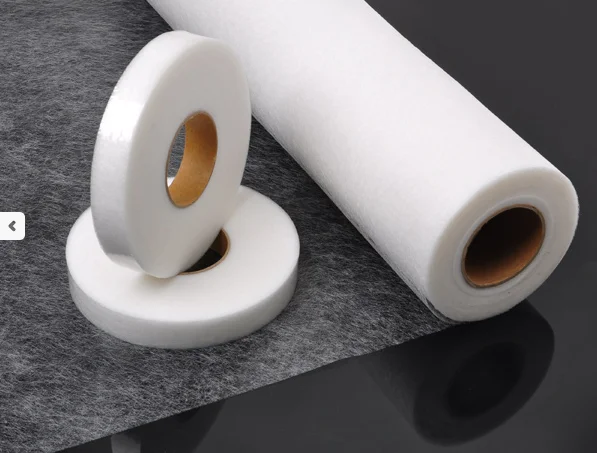The manufacturer of hot melt adhesive describes two distinct processes, which include pouring boiling water over hot melt adhesive and soaking hot melt adhesive in boiling water. Both of these procedures are described in the manufacturer's literature. In a similar vein, the temperature at which the hot melt adhesive melts is an important factor in determining whether or not the hot melt adhesive can be brought to a state in which it is liquid. The melting point of hot melt adhesives is not a fixed point; rather, it is variable and can shift depending on the circumstances of the use. Ahead of that, there is a chance that they will still be malleable. If the temperature at which the hot melt adhesive reaches its melting point is lower than polyamide double sided adhesive interlining the temperature at which water boils, then it is theoretically possible for the adhesive to be melted. This is the case if the temperature at which the adhesive reaches its melting point is lower than the temperature at which water boils. In point of fact, it is difficult to determine whether or not the maximum temperature of boiling water, which is one hundred degrees, can be maintained. However, this temperature can be reached by heating the water to a maximum of one hundred degrees.
Even though water that has been brought to a boil can reach temperatures as high as 100 degrees Celsius, the temperature of water that has been brought to a boil and then poured directly onto hot melt adhesive will cause the water's temperature to drop very quickly. Even though water that has been brought to a boil can reach temperatures as high as 100 degrees Celsius, the temperature of water that has been brought to a boil and then poured directlyAssuming that when boiling water comes into contact with the colloid, it still maintains a temperature above the melting point despite the fact that the water temperature cannot maintain a high temperature for an extended period of time, the hot melt adhesive will not melt under these circumstances. This is something that will take place if the melting point of the hot melt adhesive is below 100 degrees. If the temperature at which the colloid melts is approximately the same as the temperature at which water boils, then the colloid will melt very slowly, and depending on whether or not it needs to be completely melted, it might not even melt at all. The hot melt adhesive by itself has hot melt adhesive film no resistance to water; it is completely water-sensitive. You should also keep in mind that you won't be able to use the wet hot melt adhesive right away; rather, you will have to wait until the adhesive has completely dried out before you can melt it. This is something else you should keep in mind.

We now have a solid understanding of the difference between these two methods of bonding as a direct result of our examination of the descriptions of both of these methods of bonding. As a direct result of this understanding, utilizing glue in the future will be a great deal less difficult. The following companies that produce hot melt adhesive will discuss the differences between the two types of adhesives in more detail. The securing of the courier bag that is used for packaging and packaging, which is glued by hot melt adhesive and cold glue, is the one that is used the most frequently and is the one that is the most common. This is because these two types of adhesives are the most versatile and can be used in a variety of situations. This type of adhesive has a typical initial tack when first applied. During the cold bonding process, there will be no excess glue that flows out, and the surface of the substrate will not be damaged to an excessive degree. In addition, the surface of the substrate will not be damaged. Because pressure-sensitive adhesives are unable to achieve ideal bonding effects, and because substrates that are similar have certain requirements for the auxiliary force of hot-melt adhesives, hot-bonding methods are required to improve the fusion of the colloid and the substrate.
This is because similar substrates have certain requirements for the auxiliary force of hot-melt adhesives. Because of the proximity of this space to the air's moisture and dust, the adhesion of the hot melt adhesive to the substrate will suffer significantly as a result. After some time has passed, the layer of glue will separate from the surface of the wood board. Therefore, the glue liquid, after being heated and melted, is able to effectively KETAEBO fill the fine seams that are found on the surface of the substrate. These seams can be found anywhere on the surface of the substrate. Because of this, the glue and the substrate are able to have a contact that is closer to perfect, which increases the effectiveness of the bonding. The level of activity of the glue molecules is the determining factor in how each of these applications makes use of the glue in a unique way. Because of this, it is significantly more difficult to use than when the hot melt adhesive is in its cold sticky state. When thermal bonding is used, it is obvious that the surface of the substrate is more prone to being damaged. This is the case because thermal bonding uses heat.


